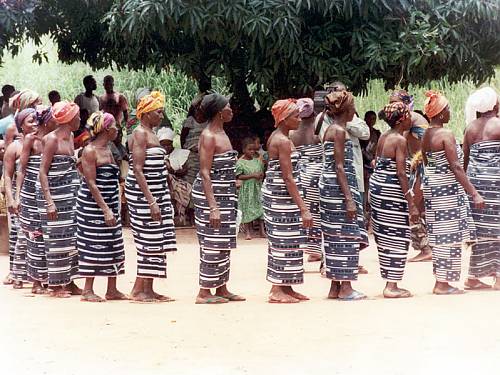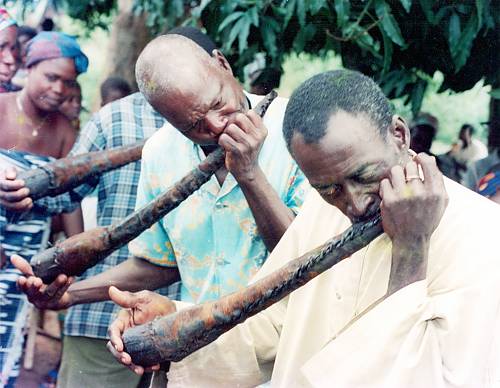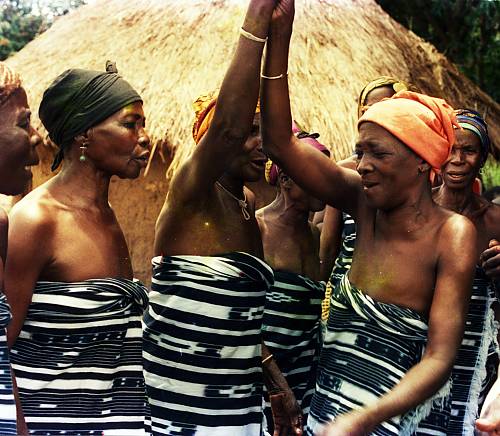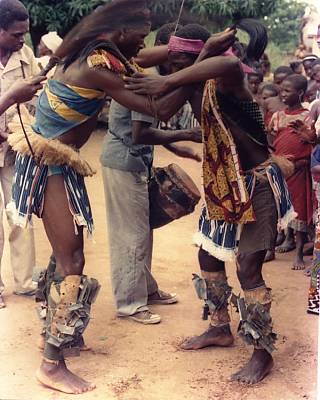Gbofe of Afounkaha, the music of the transverse trumps of the Tagbana community
Inscribed in 2008 (3.COM) on the Representative List of the Intangible Cultural Heritage of Humanity (originally proclaimed in 2001)
The Gbofe is mainly performed in the village of Afounkaha in the Tagbana community. The term Gbofe is used both for the transverse horns and for the performance as a whole, which encompasses music, song and dance. The Gbofe horns are made of roots covered by cowhide. Six of these horns are used together, ranging in length from 50 to 70 centimetres. They emit a range of sounds “reproducing” the words of the Tagbana language. These words are then “translated“ by female choirs. The music of the horns and the singing are accompanied by drummers who beat time and give the Gbofe its structure. The Gbofe is played at rituals and traditional ceremonies, and the messages conveyed vary according to the circumstances: praise, love, satire, mourning, moral or educational messages. The Gbofe played an important role by conferring respect towards the holders of the tradition, and by conveying a sense of identity on the communities. The various Gbofe performers follow an apprenticeship. While the know-how is most often passed down from father to son, young talents can also join in the training sessions.
The practice of Gbofe has ceased to exist in various regions of Côte d’Ivoire due to war, rural exodus and industrialization. Although it has been reintroduced in some communities, it is today in danger of disappearing. The young are less and less aware of this tradition.This is leading to a considerable reduction in the number of people who possess the knowledge of the rituals and the skills to make the instruments, along with a similar decline in the number of those mastering the art and techniques of the dance, songs and music.







